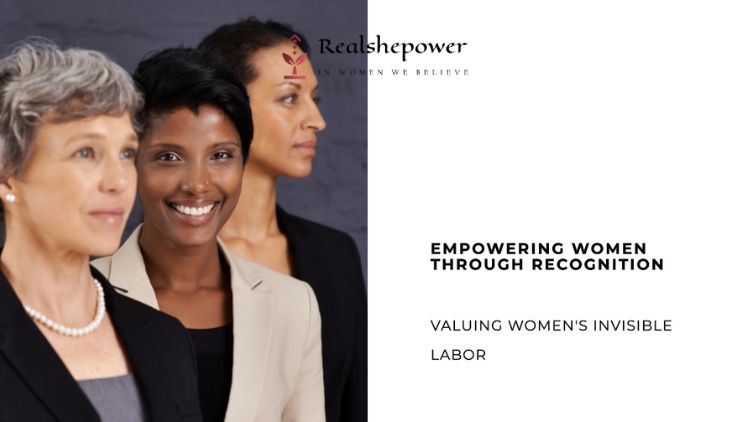The Unseen Workforce: Understanding the Invisible Labor of Women


Summary: In “The Unseen Workforce: Understanding the Invisible Labor of Women,” the article sheds light on the often-overlooked labor that women contribute in various forms, such as caregiving, household management, and emotional labor. It explores how societal norms have historically rendered this labor invisible and unacknowledged, leading to physical exhaustion, emotional drain, and economic disadvantages for women. The COVID-19 pandemic further highlighted these disparities. The article calls for a cultural shift in recognizing and valuing this labor, suggesting changes in both household dynamics and workplace policies to achieve a more equitable distribution of responsibilities and acknowledgment of women’s contributions in all their forms.
In a world that incessantly quantifies success in terms of visible achievements and monetary gains, there exists a parallel universe of labor that, despite its colossal impact, often goes unnoticed and unremunerated. This is the world of invisible labor, predominantly shouldered by women. It’s a realm where the efforts are as relentless as they are quiet, where the work done is as crucial as it is underappreciated.
The Multifaceted Dimensions of Invisible Labor
Invisible labor encompasses a wide array of tasks – from the physical to the emotional. It’s the mother who juggles her job with picking up her children from school, the wife who manages the household budget, the daughter who organizes a parent’s medical appointments, or the female leader who spends hours mediating conflicts at work. This labor extends beyond the physical realm into the emotional one, with women often bearing the brunt of emotional management and support in both personal and professional settings.
Why Don’t We See This Labor?
The invisibility of this labor stems from deeply ingrained societal norms and gender roles that have long defined ‘work’ in a way that excludes these tasks. This labor doesn’t fit neatly into the boxes of ‘professional’ or ‘economic’ contributions. It’s not clocked in on time sheets, nor is it rewarded with promotions or paychecks. Its intangibility makes it easy to overlook. But just because it’s unseen, it doesn’t mean it’s unimportant.
The Cost of Invisible Labor
The toll of this invisible labor is multifaceted. Physically, it’s exhausting. Emotionally, it can be draining. Economically, it’s costly. Women often have to make career sacrifices to accommodate these unpaid responsibilities. The ‘motherhood penalty’ is a stark example, where women face potential setbacks in their careers due to maternity leave or reduced working hours to manage child-rearing responsibilities.
The emotional labor aspect is particularly insidious. Women are often expected to be the peacekeepers, the empathizers, the ones who remember birthdays and soothe hurt feelings. In the workplace, they might be the unofficial counselors or the ones expected to maintain a pleasant atmosphere. This constant emotional vigilance is taxing, yet because it’s not tangible, it’s rarely acknowledged or compensated.
The Pandemic and Invisible Labor
The COVID-19 pandemic brought some of these issues into sharper focus. As the world retreated indoors, the burden of household management, caregiving, and homeschooling fell disproportionately on women. The pandemic peeled back the veneer of normalcy and exposed the deep-seated inequality in the distribution of invisible labor.
Changing the Narrative
So, how do we change this? Recognition is the first step. We need to acknowledge and appreciate the value of this labor. It’s about time that society starts considering these tasks as essential work that deserves recognition and compensation.
Moreover, there needs to be a cultural shift. The redistribution of household and emotional labor requires a dismantling of age-old stereotypes. It calls for partners to share these responsibilities and for workplaces to recognize and accommodate the dual roles many women play.
Employers can also play a crucial role by creating policies that recognize the value of work-life balance, offer flexible working hours, and provide support for caregiving responsibilities. Moreover, fostering an organizational culture that acknowledges and compensates emotional labor can set a new standard in the professional world.
Conclusion: A Collective Responsibility
The invisible labor of women is a linchpin in the functioning of both families and societies. As we move forward, it’s imperative that this labor not only becomes visible but is also valued and shared. It’s a collective responsibility – one that requires a shift in both perception and action by individuals, families, employers, and society at large. By bringing this invisible labor into the spotlight and treating it with the respect and importance it deserves, we can pave the way towards a more equitable and just world.
You can now write for RSP Magazine and be a part of the community. Share your stories and opinions with us here.
